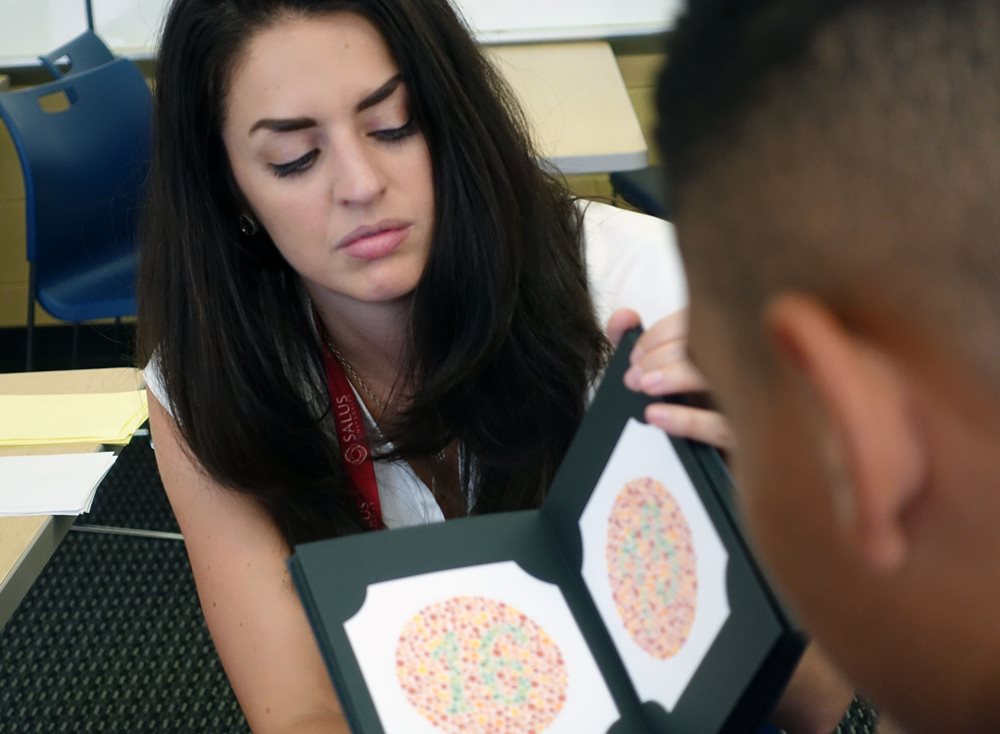Understanding Color Blindness
What is color blindness?
 Color blindness a term often used to describe people who are unable to perceive colors in a typical way. True color blindness where someone sees everything in shades of gray is actually very rare. Color anomalies or differences in color perception are much more common and vary with type and severity. Red-green color anomalies are seen most often, while blue-yellow color blindness is less common. Those with a mild color deficiency may be able to see colors normally in good lighting, but have difficulty in poor lighting or differentiating pastel or darker colors. Others cannot determine certain colors in any light.
Color blindness a term often used to describe people who are unable to perceive colors in a typical way. True color blindness where someone sees everything in shades of gray is actually very rare. Color anomalies or differences in color perception are much more common and vary with type and severity. Red-green color anomalies are seen most often, while blue-yellow color blindness is less common. Those with a mild color deficiency may be able to see colors normally in good lighting, but have difficulty in poor lighting or differentiating pastel or darker colors. Others cannot determine certain colors in any light.
Color vision anomalies are conditions caused by differences in the way photoreceptor cells found in the back of the eye process long (red), medium (green) and short (blue) wavelengths of light. These cells are known as cone cells and the brain uses information processed by all three cone types to determine the color of an object. Differences in color perception occur when one or more of the cone cells is detecting color in an atypical way.
Who suffers from color blindness?
Difficulties with color can be either inherited or acquired. Inherited color problems are much more common, especially in males, and do not change throughout life. Approximately one in 12 males and one in 200 females has one of several types of inherited red-green color deficiencies. Acquired color anomalies can also be caused by some medical conditions, certain medications and traumatic brain injuries.
Diagnosing and treating color blindness
In order to diagnose someone with color blindness, optometrists can use a variety of tests. One of the most common involves showing the patient circles containing many multi-colored dots that form a shape or number in the center. If the patient has typical color vision, they will be able to see a number or shape within the dots. If they are color blind or have a color vision anomaly, it will appear as if there is nothing present, or they might have a problem determining what the correct number or shape is. These and other tests can determine both the type and severity of color anomaly present.
Currently, inherited color deficiencies cannot be cured. If however, someone acquires color vision problems due to a medication or disease, treating the underlying cause may stop or even reverse the progression of the color anomaly. Color vision testing in these situations can be helpful to monitor treatment.
Dr. Elise Ciner, a pediatric optometrist at The Eye Institute of Salus University, recommends color visions tests for children to identify any issues.
“It’s important for children to have their color vision tested, especially males who have a family history of color deficiency,” she said. “While many jobs and professions do not require color perception skills, there are many that do. Testing children prior to kindergarten and once more during the school years can help with vocational and job counseling, avoiding career choices that may not be open to them due to the presence of a color anomaly.”
There are certain types of lenses that may help individuals with color deficiencies perceive colors that cannot otherwise be seen. These lenses do not, however, provide a typical color vision experience and have limitation in their usefulness. They are often not allowed for professions requiring accurate color vision.
All new patients at The Eye Institute receive a color vision test as part of their routine care. Specialty color vision testing required for certain industries, such as law enforcement, the coast guard, government agencies or other occupational needs is also available through the Electrophysiology and Specialty Color Vision Service.
If you or someone you know has difficulty detecting certain colors, contact The Eye Institute today.